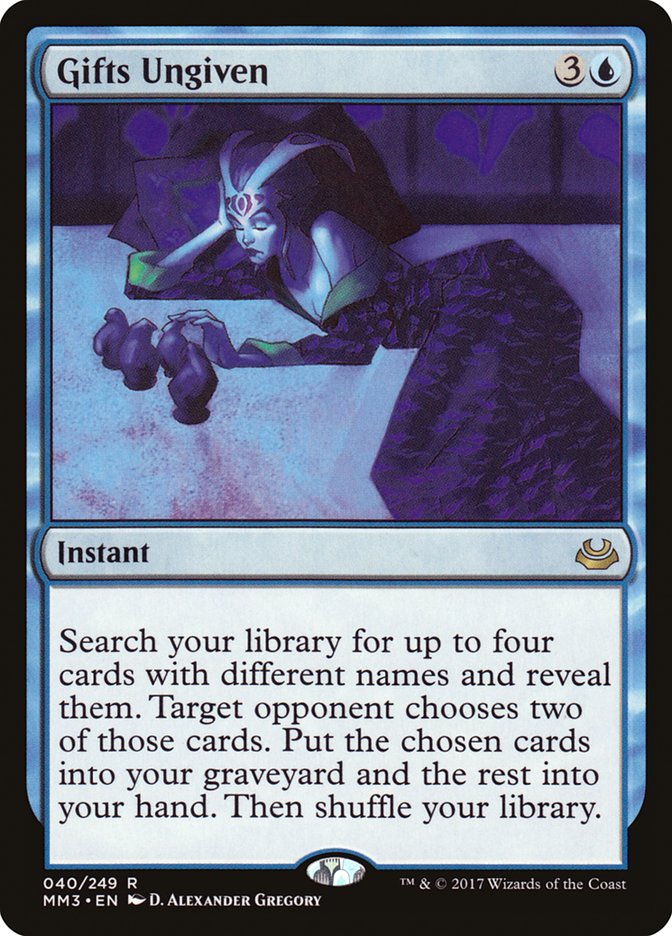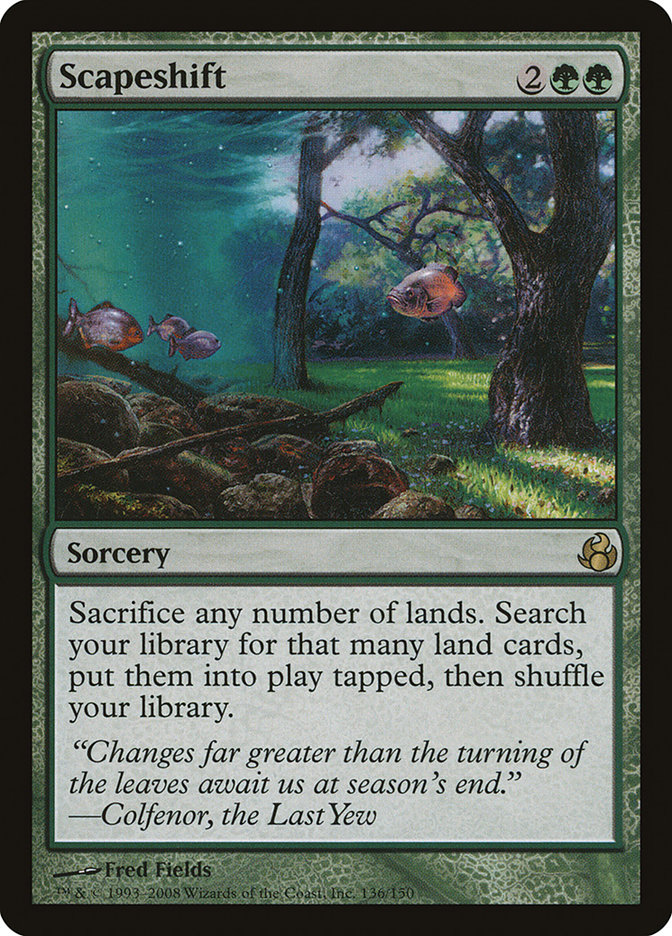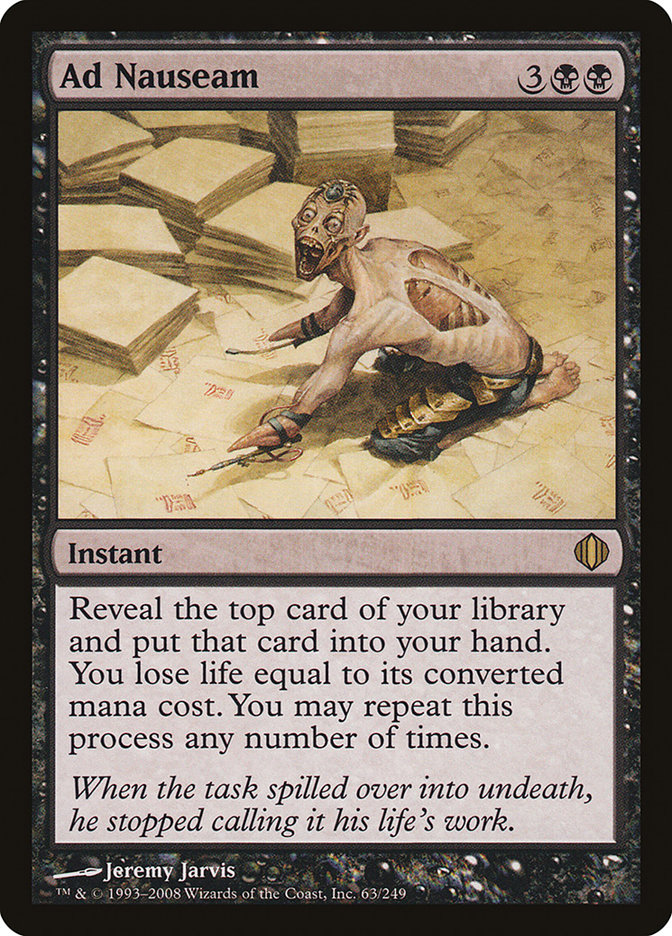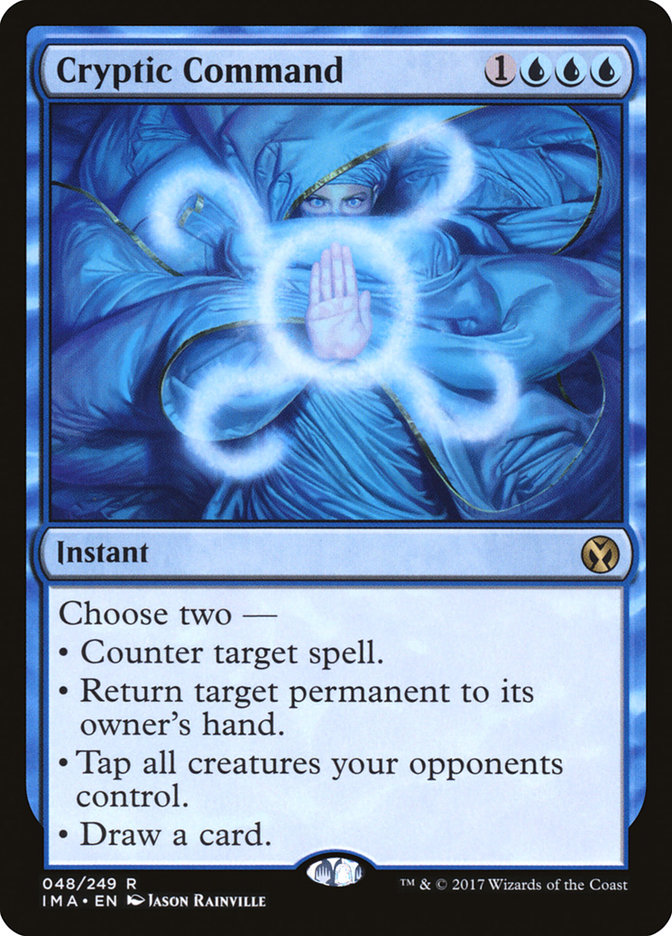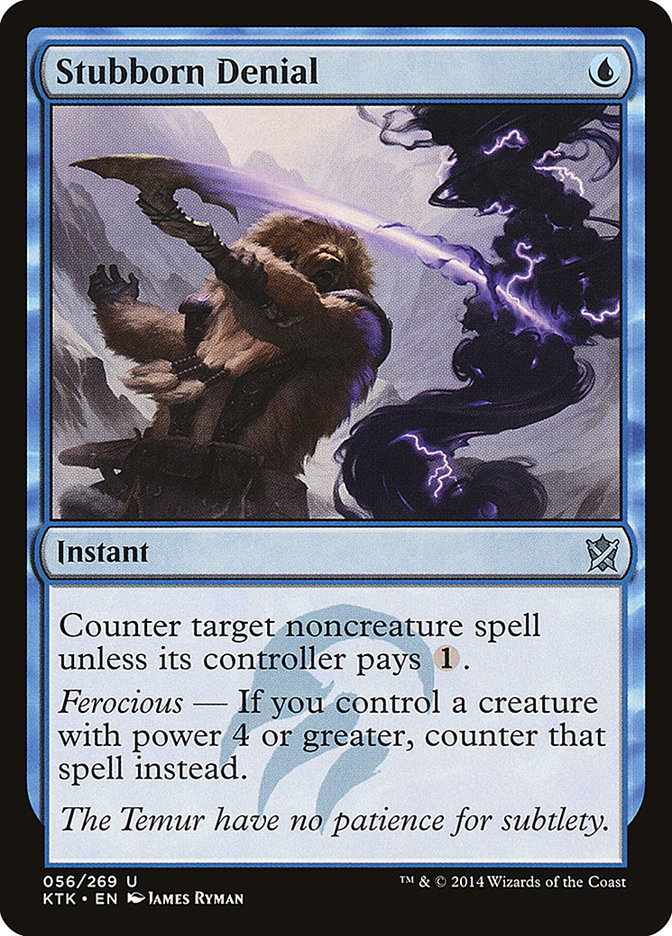Taking a break from something you love is hard.
As many people may have noticed, I recently
stepped away
from playing Magic professionally, and have started doing more work behind
the scenes here at StarCityGames. In a lot of ways it’s been great! Having
a static schedule is hardly glamorous, but having a routine is nice. The
regular paycheck and benefits that come with a full-time job are also
things that I’d put in the “Not Too Shabby” category. Without the need to
playtest as frequently and with more established blocks of free time, I’ve
been able to read more articles, watch more videos, listen to more
podcasts, and tune in for more streams than ever before.
Despite the reduced playtesting and thinking about Magic less seriously, it
hasn’t felt as if I’ve lost significant percentage points when it comes to
play. [Ding.–Ed.] Just two weeks ago at #SCGCIN,
I picked up a stock Legacy Grixis Delver list for the first time in my
life, and despite having zero reps with the deck, was able to put myself in
a position to have three consecutive win-and-ins for Top 8 in the Legacy
Classic.
It’s romantic to pretend that it was purely play skill and intuition that
got me to this result, but if I’m being honest, I simply recalled things
that I learned from Legacy articles I’ve read over the years and was able
to apply that in ways that translated to the situations that arose.
How is this possible? Think about it: most of the things we do in Magic are
simply drawing parallels between previous situations that we’ve encountered
and using the experience to figure out what we should do. Doing the same
thing with the articles we read is just the next step.
Picking Your Poison
The best way to train for an event or get better at Magic is to play games
of Magic, but that isn’t always possible. Making time for Magic is hard.
Now that I have a typical nine-to-five job, I appreciate this more than I
have in a long time. That’s what content creators are here for. They tend
to put in hours of work to create a product that takes significantly less
time to consume than it does to make. Even videos, which one could assume
would have a 1:1 time-spent-creating-to-time-spent-consuming ratio, still
has all the editing, uploading, and preparation that goes into making the
video.
This isn’t to say that creating content is a slog or to rag on those who do
it all the time! Quite the opposite, in fact. This is to say that reading a
single article can do in twenty minutes what would normally take hours of
work. To draw from personal experience, the only reason I originally bought
an SCG Premium subscription was to read Ari Lax’s articles. His ability to
analyze an entire format and condense the information into 4,000 words or
so has added years to my life.
The first step to absorbing information from articles and their ilk is
making the conscious decision to process the information for the sake of
retaining it. Obvious, isn’t it? “Realize what you’re doing” may sound like
silly advice, but it’s easy to fall into a routine that involves skimming
articles from the best players in their respective formats, memorizing the
sideboard guides given for Grixis Energy and Five-Color Humans, and calling
it a day. Reading every word and idea presented in an article is crucial.
It’s easy to miss the best takeaways in articles because the takeaway may
not be framed as the main point.
For most of this piece, I’m going to stick to talking about articles, as
they’re the fastest pieces to consume, easiest to share, and the most
common style of content found on the internet. That being said, it isn’t
the only type of content out there.
Try and determine the way you learn best and prioritize content that fits
your needs. Auditory learner? Look at podcasts, there are hundreds. Visual?
There aren’t enough hours in the day to consume all of the content onYouTube and Twitch.
If writing helps you retain information, start taking notes. This forces
you to acknowledge the information that you’re getting out of an article
and requires you to understand it to relay it to yourself. If something
doesn’t make sense, drop a comment in the article, or reach out to the
author. It’s shocking how responsive authors can be when people ask them
questions about their work in such a way to demonstrate that they actually
read the article and want more.
Understand Your Interest
Why are you reading Magic articles?
Not everyone is going to want to read all the same articles, care about the
same formats, or heck, even respect the same authors. The purpose of
reading articles is to absorb knowledge in some form or another, be it
gaining understanding or something as simple as memorizing decklists.
It’s okay if you’re the type of player to read articles for Commander and
you couldn’t care less about who registered what cards at the most recent
Standard Grand Prix. If that’s the case, reading Standard articles may not
be the best use of your time, even if the player is held in high regard.
Having genuine interest in the topic that you’re reading is a big part of
retaining what you take in. Naturally, branching out doesn’t tend to hurt
anybody, but fully appreciating ten articles about your format of choice is
going to be worth far more than skimming 100 articles about formats you
can’t emotionally invest yourself in.
On the note of prioritization, allocation of time is important. Sure,
skimming Gerry Thompson’s
GerryT’s 10 Things
series may be easy on a smoke break, but it’s going to be much harder to
get through one of Sam Black’s pieces exploring the ways to brew with
off-the-wall cards in Modern without setting aside time to read. This isn’t
to say that Gerry’s articles are better or worse than Sam’s. This is to
drive home the point that the decklist plus summary of decklist formula is easy to follow in passing,
but a single train of thought that lasts for 3,000 words is going to be
hard to soak in if there’s something else going on or if you’re rushed. Set
aside time to learn; it really is that simple.
What to Look For
When reading articles, it’s easy to fall into the rhythm of what the author
is saying, and simply take everything they say at face value, without
considering the cross-applications of their words.
Last year, Jim Davis wrote an article titled ”
The Most Overrated Cards in Magic Today
.” Feel free to read the article yourself, but what’s relevant here is in
the following passage:
“In most of the scenarios where
[card name="Force of Will"]Force of Will
[/card]
is holding Legacy together, it is countering a single card that a
player is using their entire hand to cast. If a player is able to
counter a
[card name="Goblin Charbelcher"]Goblin Charbelcher
[/card]
,
[card name="Infernal Tutor"]Infernal Tutor
[/card]
, or
[card name="Balustrade Spy"]Balustrade Spy
[/card]
that took an entire hand to cast, the
[card name="Force of Will"]Force of Will
[/card]
that countered it ends up looking more like a
[card name="Mind Twist"]Mind Twist
[/card]
than
[card name="Counterspell"]Counterspell
[/card]
.”
What does this tell us? We can deduce quite a bit about how we should be
playing against combo decks from this paragraph.
The fact that payoff cards from multiple decks are listed illustrates that
it’s a macro archetype that falls into the combo genre, rather than a
unique synergy that is specific to a single deck, like Dredge.
Contextually, this tells us that the best time to be casting Force of Will
is on the payoff card.
The next step is figuring out why the best time to counter a spell is on
the payoff card. This one is a bit of a gimme, but it’s because the further
the opponent plays into their combo, the more resources they dedicate to
executing their plan. Countering the payoff card will frequently empty the
tank, so to speak, and will take the opponent the largest amount of time to
rebuild from. Jim spelled out this point clearly in his original article,
but that wasn’t the point of his article.
Force of Will being a free counterspell means that it could’ve been cast at
any point during the combo, but knowing when to cast Force of Will during a
combo chain also lets us figure out the ideal time to be casting other
counterspells against other styles of combo decks.
It’s hard to come up with examples of other payoff cards….
Or applicable counterspells in the same format…
Hopefully my dear old [Ding.–Ed.] editor can come up
with something.
The focal point of the article was cards that are near-ubiquitously
overvalued. Despite that, the biggest takeaways from the article aren’t
which cards are overvalued. The point of the article is to explain how the
cards should properly be used. Even if Force of Will, Path to Exile, Aether
Vial, and so on are all unique cards, they aren’t the only cards with those
styles of effects.
Some of the best passages in Magic articles can easily be glossed over,
when they can say a lot about how to effectively navigate matchups
throughout Magic. One of Jadine Klomparens’
first articles
for SCG was about common mistakes that people make when sideboarding, and
in the article she brings up the theory around decks being
positive-complexity and negative-complexity. To quote her explanation:
“Decks like
Jund
and Abzan are negative-complexity decks. They are low-synergy decks
that want to exchange resources with the opponent as quickly as
possible and then dominate the resulting low-complexity battlefield
state with one or two individually powerful threats. On the other end
of the spectrum is a deck like Abzan Company. Company is a
positive-complexity deck that thrives in battlefield states where both
players have a huge mass of material and combat is a complete and utter
headache.”
The section goes on to describe how the two styles of decks tend to
sideboard against the decks that fall under each umbrella, and why. The why is what is important here. Look at this:
“Cards like
[card name="Abrupt Decay"]Abrupt Decay
[/card]
and
[card name="Path to Exile"]Path to Exile
[/card]
are historically popular in Abzan Company sideboards and are dangerous
cards for inexperienced pilots to register in these decks. For a lot of
high-complexity decks, cards like these are in the sideboard to deal
with very specific problem permanents that players will choose to bring
in.”
Even without an entire write-up on Abzan Company, we can use this passage
to determine how it is that high-complexity decks tend to function. They’re
archetypes with cards that are worth more than the sum of their parts, and
don’t want to be diluted with interactive spells. The same paragraph tells
us that the negative-complexity decks go in the opposite direction.
Outlining all of this does more than talk about how to play Jund mirrors,
or the Abzan Company/Jund matchup. It gives some insight how to sideboard
with negative-complexity decks against other negative-complexity decks,
even if there aren’t Thoughtseizes and Inquisition of Kozileks involved.
This is fairly baseline stuff for a chunk of entrenched players, but what
we’re doing here is building a foundation of how to look at things and pull
extra information out of articles.
Progressing
This article isn’t going to tell you everything you’ll ever need to know
about reading articles. Everybody has their way and their methods. Your job
is to figure out what is best for you and refine that until you’re growing
at the most efficient rate possible.
I said it once and I’ll say it again: the purpose of consuming content is
to grow. Checking pride and preconceptions at the door is going to do a
world of good for one’s learning capabilities. Nothing comes overnight, and
it’s rare we realize the impact that a piece of media is going to have on
us until we have the benefit of hindsight.
All we can do is keep reading, listening, and watching.


